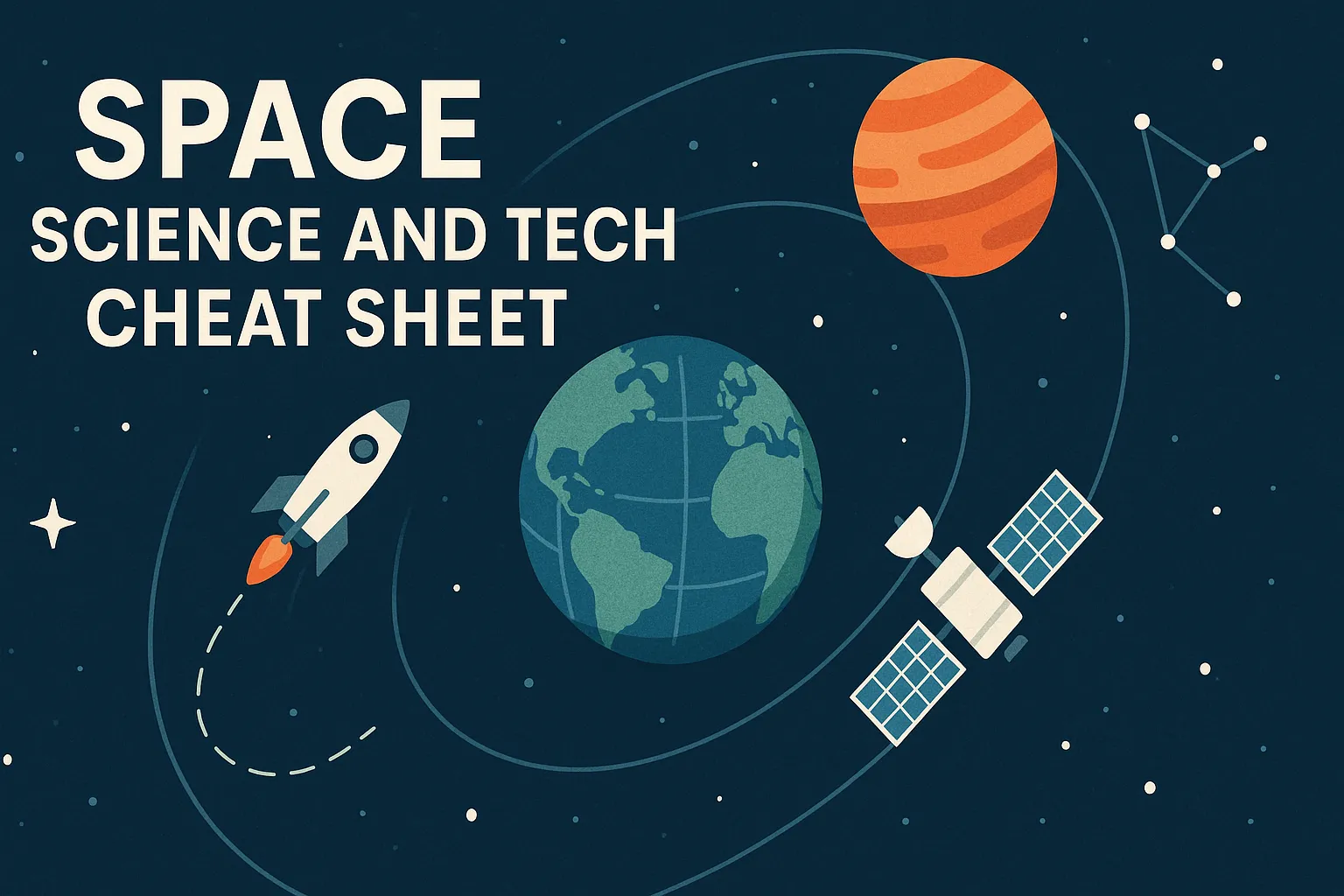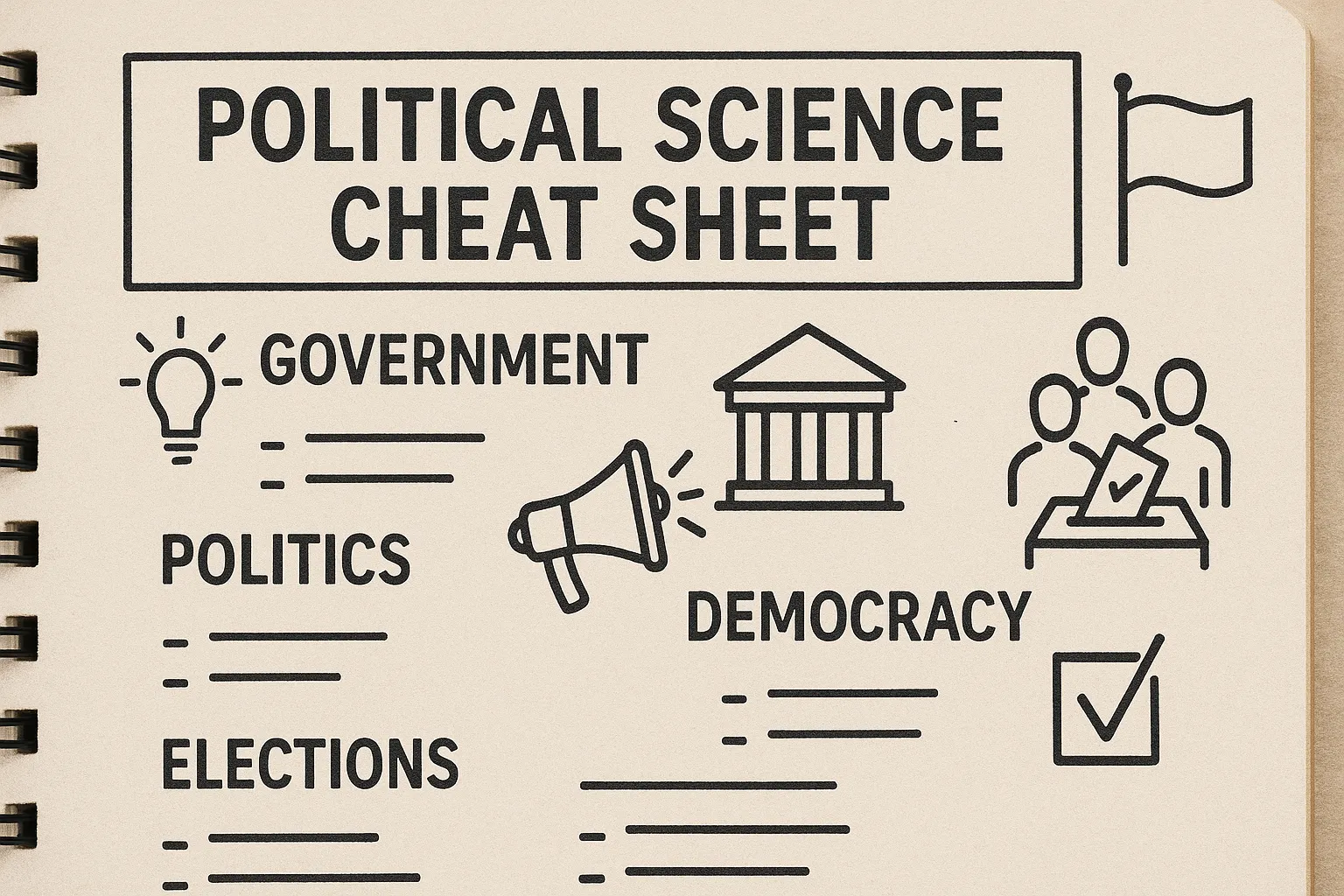Ultimate Cheat Sheet for Biotechnology for UPSC Prelims 2025
Last Updated
29th April, 2025
Date Published
27th April, 2025
Share This Post With Someone

Want To Print The Cheat Sheet & Prepare On The Go?
Comprehensive Analysis of Modern Biotechnology Techniques and Applications
This report synthesizes critical biotechnology concepts from provided research materials, focusing on groundbreaking technologies reshaping genetic engineering, medical treatments, and genomic research. The analysis emphasizes mechanistic details, applications, and comparative advantages of key biotechnological tools.
Recombinant DNA Technology: Foundations of Genetic Manipulation
Core Principles and Methodological Framework
Recombinant DNA (rDNA) technology enables the creation of artificial DNA sequences by combining genetic material from multiple sources. The process involves:
- DNA Isolation: Extraction of target DNA (genomic, plasmid, or synthetic) from donor organisms.
- Restriction Enzyme Digestion: Enzymes like EcoRI create staggered cuts at specific palindromic sequences, generating "sticky ends" for precise fragment joining.
- Vector Ligation: Plasmid vectors-circular bacterial DNA-are spliced with target genes using DNA ligase, forming recombinant constructs.
- Host Transformation: Engineered plasmids are introduced into bacterial hosts (e.g., E.coli) for replication and protein expression.
Medical and Industrial Applications
- Therapeutic Protein Production: Engineered bacteria synthesize human insulin, eliminating reliance on animal-derived hormones and reducing allergic reactions.
- Vaccine Development: Hepatitis B vaccines use yeast-expressed viral surface antigens, ensuring safety compared to traditional attenuated pathogens.
- Gene Libraries: Genomic libraries store fragmented DNA sequences for rapid gene retrieval, accelerating disease research.
CRISPR-Cas9: Precision Genome Editing
Operational Mechanism
CRISPR-Cas9 combines a guide RNA (gRNA) and Cas9 endonuclease to enable programmable DNA cleavage:
- gRNA Design: A 20-nucleotide sequence directs Cas9 to complementary genomic regions.
- DNA Recognition: Cas9-gRNA complex scans DNA, unwinding double helices to verify target matches via Watson-Crick base pairing.
- Double-Strand Break (DSB): Cas9’s HNH and RuvC domains cleave both DNA strands 3 bp upstream of protospacer adjacent motifs (PAMs).
- Repair Pathways:
- Non-Homologous End Joining (NHEJ): Error-prone repair introduces insertions/deletions (indels) for gene knockout.
- Homology-Directed Repair (HDR): Template-guided correction enables precise edits.
Therapeutic Innovations
- Sickle Cell Anemia: CRISPR corrects HBB gene mutations in hematopoietic stem cells, restoring normal hemoglobin production.
- CAR-T Cell Engineering: Enhanced tumor targeting in chimeric antigen receptor T-cells improves cancer immunotherapy efficacy.
- Antiviral Strategies: CRISPR disrupts HIV proviral DNA in latent reservoirs, offering potential functional cures.
Polymerase Chain Reaction (PCR): Amplifying Genetic Signals
Thermodynamic Cycle Design
PCR exponentially amplifies DNA through three temperature-dependent phases:
- Denaturation (95°C): Heat separates DNA strands by breaking hydrogen bonds.
- Annealing (55–65°C): Primers hybridize to flanking sequences of the target region.
- Extension (72°C): Thermostable Taq polymerase synthesizes complementary strands using dNTPs.
Diagnostic and Research Applications
- Pathogen Detection: Real-time PCR (qPCR) quantifies viral loads (e.g., HIV, SARS-CoV-2) via fluorescent probes like TaqMan.• Forensic Analysis: Short tandem repeat (STR) amplification from minute DNA samples enables individual identification.
- Ancient DNA Studies: Mitochondrial DNA from fossils reveals evolutionary relationships between extinct and modern species.
Gene Therapy: Correcting Genetic Anomalies
Delivery Modalities and Strategies
Gene therapy employs viral/non-viral vectors to rectify defective genes:
Ex Vivo Approaches
- Hematopoietic Stem Cells (HSCs): Lentiviral vectors integrate functional genes (e.g., ADA for SCID) into patient-derived HSCs before reinfusion.
- T-Lymphocyte Modification: Retroviruses engineer CAR receptors enhancing cancer cell recognition.
In Vivo Systems
- Adeno-Associated Viruses (AAVs): Deliver CFTR genes to airway epithelia in cystic fibrosis patients.
- Lipid Nanoparticles: Encapsulate mRNA for OTC gene delivery in urea cycle disorders.
Ethical and Technical Challenges
- Insertional Mutagenesis: Retroviral integration risks disrupting tumor suppressor genes (e.g., LMO2 activation in X-SCID trials).
- Germline Editing Ban: International consensus prohibits heritable genome modifications due to off target risks and ethical concerns.
Advanced Genome Editing Platforms
Zinc-Finger Nucleases (ZFNs)
ZFNs fuse zinc-finger DNA-binding domains to FokI endonucleases:
- Design Complexity: Each zinc finger recognizes 3 bp, requiring multi-finger arrays for specificity.
- Therapeutic Use: ZFNs disrupt CCR5 in HIV patients’ T-cells, conferring viral resistance.
TALENs: Enhanced Specificity
Transcription activator-like effector nucleases (TALENs) use modular repeats to bind DNA:
- Repeat-Variable Diresidues (RVDs): Each repeat recognizes a single nucleotide (NI=A, NG= T).
- Bacterial Delivery: Salmonella Type III secretion systems inject TALEN proteins directly into human cells, avoiding plasmid integration risks.
Base Editors: Chemical DNA Conversion
Cytosine/adenine base editors (CBEs/ABEs) enable single-nucleotide edits without DSBs:
- Mechanism: gRNA directs Cas9 nickase-deaminase fusions to convert C→T or A→G via deamination.
- Applications: Correct PRODH2 mutations in progeria and HBB mutations in β-thalassemia.
Stem Cell Technologies: Regenerative Potential
Pluripotent Stem Cell Types
- Embryonic Stem Cells (ESCs): Derived from blastocyst inner cell mass; differentiate into all somatic lineages.
- Induced Pluripotent Stem Cells (iPSCs): Somatic cells reprogrammed via OCT4/SOX2 overexpression, avoiding ethical issues of ESCs.
Therapeutic Paradigms
- Parkinson’s Disease: Dopaminergic neurons derived from iPSCs restore motor function in primate models.
- Myocardial Repair: ESC-derived cardiomyocytes integrate into infarcted heart tissue, improving ejection fraction.
Conclusion: Converging Technologies for Precision Medicine
Modern biotechnology integrates recombinant DNA systems, CRISPR editing, and stem cell
engineering to address previously intractable diseases. While ZFNs and TALENs pioneeredprogrammable editing, CRISPR-Cas9’s simplicity and base editors’ precision dominate
current research. Challenges persist in delivery efficiency and off-target control, but
combinatorial approaches (e.g., CRISPR-iPSC platforms) promise personalized therapies for
genetic disorders. Ethical frameworks must evolve alongside technical advancements to
balance innovation with societal responsibility.



